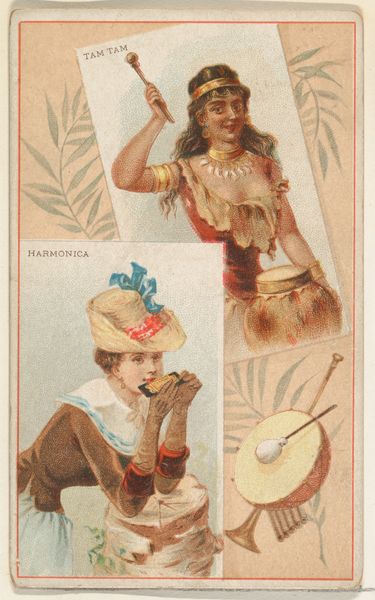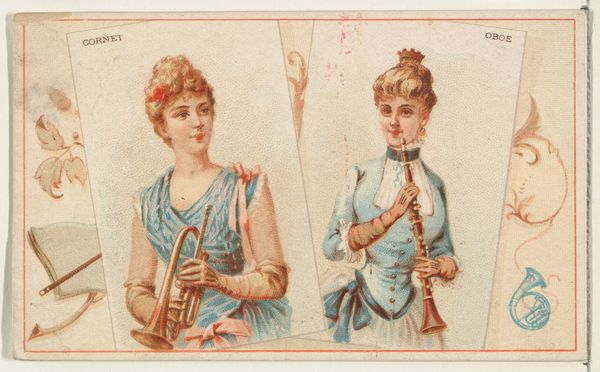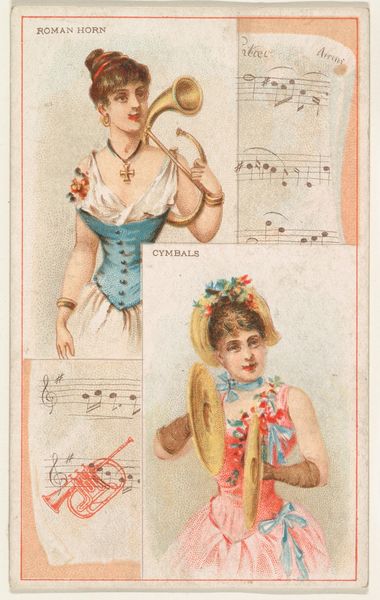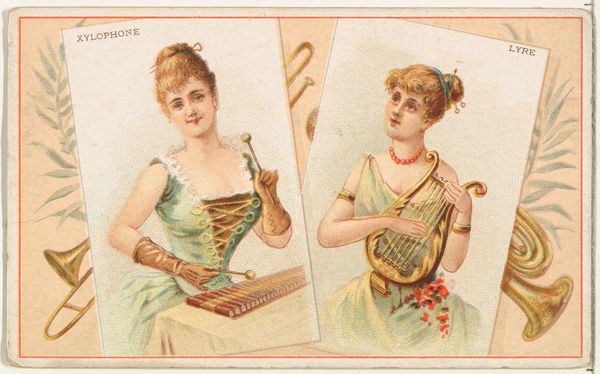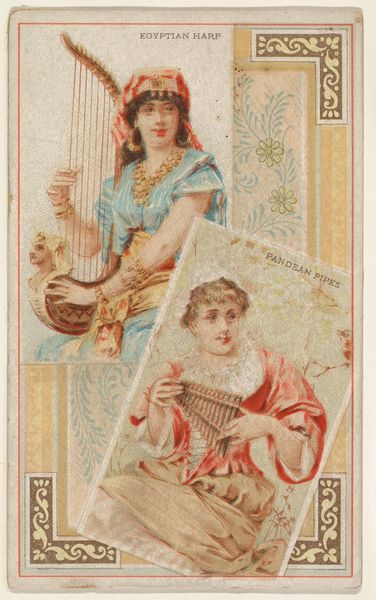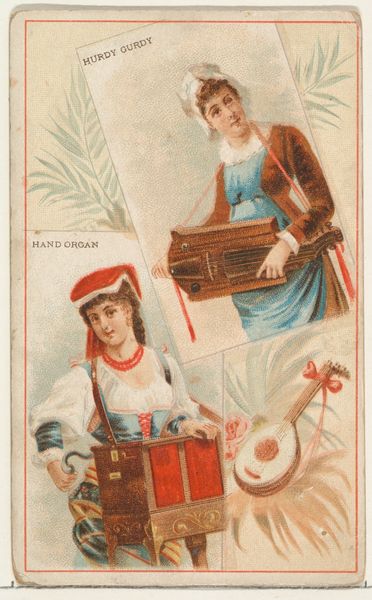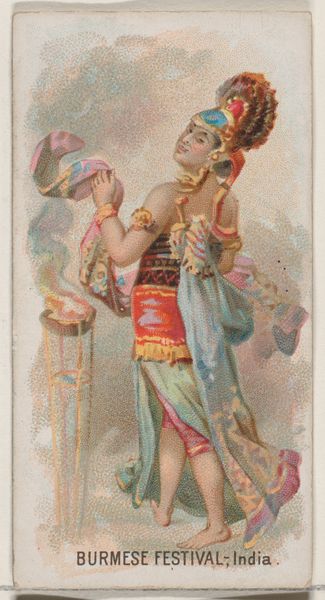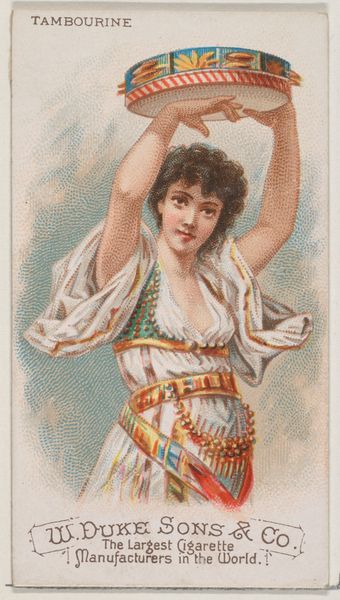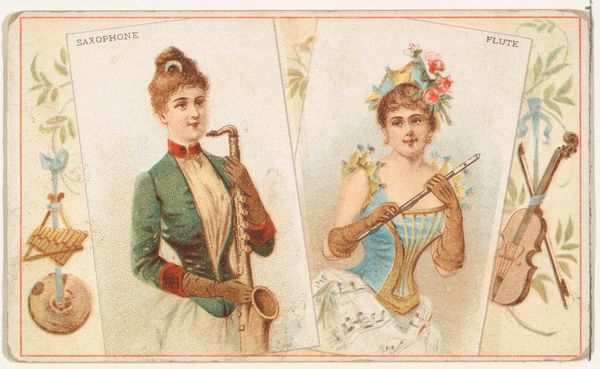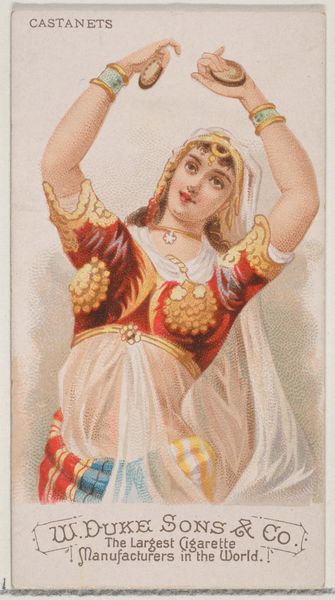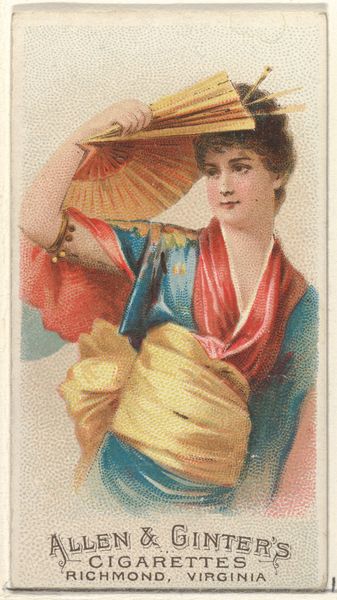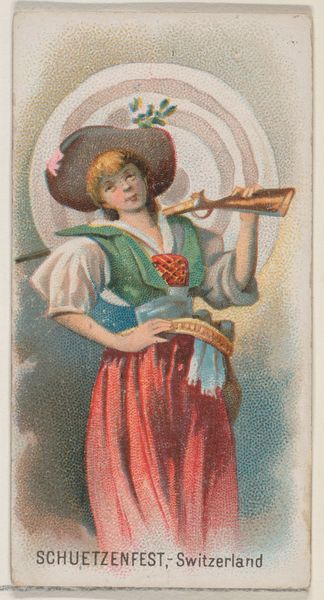
Castanets and Seimseim, from the Musical Instruments series (N121) issued by Duke Sons & Co. to promote Honest Long Cut Tobacco 1888
0:00
0:00
drawing, print
#
drawing
#
water colours
# print
#
handmade artwork painting
#
oil painting
#
coloured pencil
#
coffee painting
#
underpainting
#
men
#
painting painterly
#
watercolour bleed
#
watercolour illustration
#
musical-instrument
#
watercolor
Dimensions: Sheet: 4 1/16 × 2 1/2 in. (10.3 × 6.4 cm)
Copyright: Public Domain
Editor: Here we have "Castanets and Seimseim" from 1888, part of the Musical Instruments series by W. Duke, Sons & Co. It’s a print with some watercolor, a promotional item for tobacco, interestingly. The pairing of what appears to be a Turkish or Romani woman with castanets, with a Japanese woman with a shamisen--seimseim being an older term. How would you interpret this pairing? Curator: The pairing, indeed, strikes one as quite deliberate. These images are, of course, laden with cultural baggage. Consider the context: 1888. What do the castanets and the shamisen evoke at this time? What worlds do they open, and to whom? Think of the Western fascination with the "Orient," the "exotic" East. The shamisen represents a controlled grace, a specific artistic tradition linked to Japan. Editor: So, it's about contrasting perceptions? Curator: In part. But it's also about the symbols embedded within the instruments and the figures themselves. Castanets, in their association with Spain and by extension figures that could easily be stereotyped. It invites thoughts on what’s staged for display versus the internal experiences. Where are these sounds truly born? Editor: The print is essentially turning cultural symbols into marketing tools? Curator: Precisely. What is being sold isn’t just tobacco, it is a lifestyle, a set of associations. Note how even the women conform to specific ideals; there's a story of culture, performance and consumerism woven in these visuals. The symbols they are imbedded with carry on over the ages. It would be worthwhile to delve into tobacco advertising during that time! Editor: That makes so much more sense now. It is more than just pretty images. Curator: Visual culture offers clues. It offers cultural memories. If we look closely, we can piece together the values, the desires, the very air of a specific moment in time. The image, itself, becomes an instrument to see beyond.
Comments
No comments
Be the first to comment and join the conversation on the ultimate creative platform.
